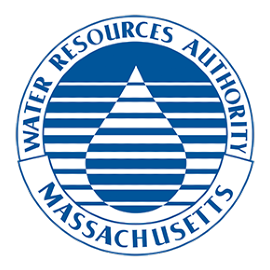MWRA tests drinking its water in accordance with state and federal standards to make sure that the water is safe to drink. Below are links to MWRA's water quality test data and information about water quality testing.
Water Quality Test Results |
|---|

Monthly Water Quality Test Results
A detailed overview of tests conducted on water sampled at MWRA's source reservoirs (source water), on water after treatment, and on on treated water sampled from MWRA or community lines.

Annual Water Quality Test Results
A general overview of where MWRA's water comes from, how it is treated and tested, and what water quality tests show. It also includes information from local water service providers. The report is mailed each June to every customer in our service area and
HOW TO HAVE YOUR HOME'S TAP WATER TESTED
Massachusetts residents who would like to have their home water tested should contact a DEP certified water quality testing laboratory. These labs perform home water quality testing for a small fee.
MWRA'S DEPARTMENT OF LABORATORY SERVICES
Information about MWRA's testing and analytical testing capabilities.
ADDITIONAL INFORMATION |
|---|
| Contaminants Tested for in the MWRA Water System A list of potential contaminants that are routinely tested for in the MWRA water system. |
| Cryptosporidium and Giardia Lamblia MWRA's test results for Cryptosporidium and Giardia lamblia at the Quabbin and Wachusett Reservoirs.Wachusett Reservoir dates back to July, 1997. Quabbin Reservoir data dates back to June, 1998. |
| Lead MWRA source waters, the Quabbin and Wachusett Reservoirs, contain no lead. |
| UCMR (Unregulated Contaminant Monitoring Rule) Data The US Environmental Protection Agency (EPA) periodically requires water systems across the country to conduct monitoring for substances that may be present in drinking water to help understand their national occurrence as part of the process of deciding whether to regulate them. |
| Massachusetts Department of Conservation and Recreation - Division of Water Supply Protection (DCR/DWSP) Water Quality Reports (outside link) |
